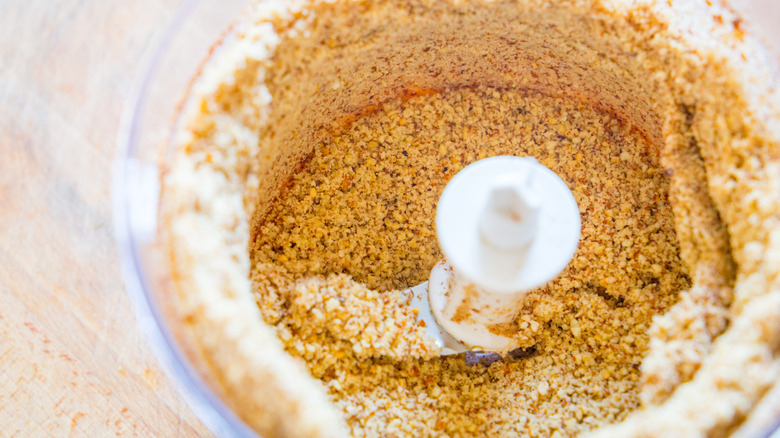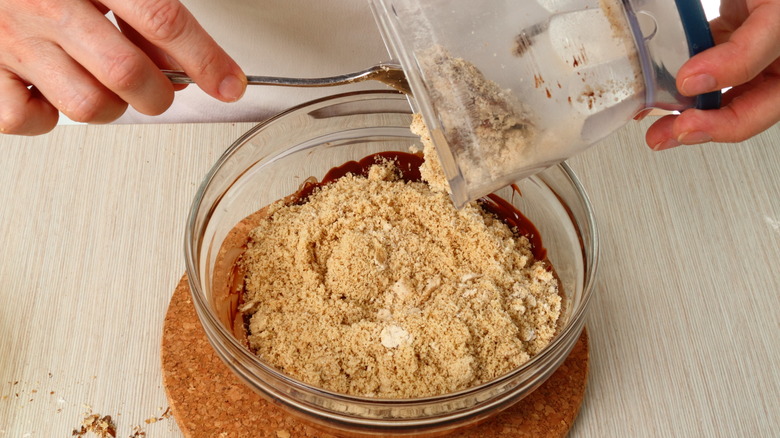The Simple Tip That Will Help Prevent Lumpy Almond Butter
Almond butter has been a major part of the superfood movement. This spread, which is made from ground, roasted almonds, is high in monounsaturated fats. These fats are the ones that get rid of the bad cholesterol. While there are plenty of brands of this peanut butter substitute that line grocery store shelves, it may be even easier, more convenient, and cheaper to make your own. But if you are going to venture into the DIY waters for almond butter, there's a tip you need to help avoid the lumps and bumps you might encounter when making it.
When making your own almond butter, the key is to start small, using just a handful of almonds in your food processor or blender to get your almond butter underway. There is a practical reason for this: Your small appliance may not have the capability to handle large quantities at one time.
Make almond butter without hurting your food processor
Forcing more nuts into your blender than it can handle can cause a few issues. Firstly, you are not going to get a smooth spread if you add too many almonds at one time. In fact, it may end up all clumpy and stuck to the blades. Low and slow is the way to go, and gradually add more of these nuts until you've achieved the amount and consistency your mouth desires. However, ending up with a big clump of chunky almond butter stuck on your blade is not the only concern you need to consider.
You could burn out your motor if you add too many almonds, too quickly, and no one wants that. It is important to remember that many blenders and food processors are not designed to grind large quantities of any hard nuts at one time. This is especially true of almonds, which are not particularly soft to begin with. Remember, the goal of these kitchen tools is to work smarter.

